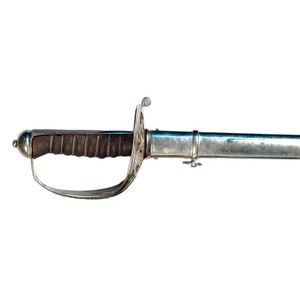Echizen Seki Kanbun Katana with Higo Mounts and Kanteisho
You must be a subscriber, and be logged in to view price and dealer details.
Subscribe Now to view actual auction price for this item
When you subscribe, you have the option of setting the currency in which to display prices to $Au, $US, $NZ or Stg.
- Attributed - A cataloguing term where the item in the opinion of the cataloguers, is a of the period of the artist, craftsman or designer, and which probably in whole or part is the work of that person.
- Shakudo - Japanese shakudo is a traditional alloy that has been used in Japan for centuries. It is primarily composed of copper and gold, with the copper serving as the base metal and the gold adding a yellowish hue to the alloy. Shakudo is known for its beautiful dark blue-black or black colour, which is achieved through the addition of a small amount of a patina-inducing element like silver or arsenic.
The word "shakudo" itself can be translated as "red copper" in Japanese, referring to the reddish-brown color of the pure copper base metal before it is patinated. The gold content in shakudo is usually around 4-10%, but this can vary depending on the specific purpose or desired appearance.
Shakudo has been traditionally used in various forms of decorative arts and crafts in Japan. It is particularly associated with metalwork, including sword fittings (such as tsuba, menuki, and kashira), jewelry, and small ornamental objects. The alloy's dark color provides a striking contrast to other metals like silver or gold, making it ideal for intricate inlay work or as a background for other decorative elements.
This item has been included into following indexes:
Visually similar items

Silvered niello letter opener with an exotic feline handle. Length 50.5 cm

A late Victorian 1827 pattern Rifle Regiment Officer's sword, the chromed steel Gothic style hilt with crowned bugle horn in a cartouche, the fish skin grip with silver wire bindings, the chrome blade with engraved Prince of Wales feathers, No. 35122, make

An antique signed Japanese sword

World War I French 1886 pattern spike bayonet quad spike steel and brass grip with matching scabbard 52 cm blade length
